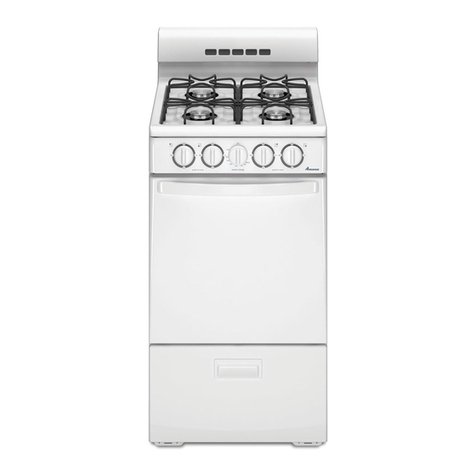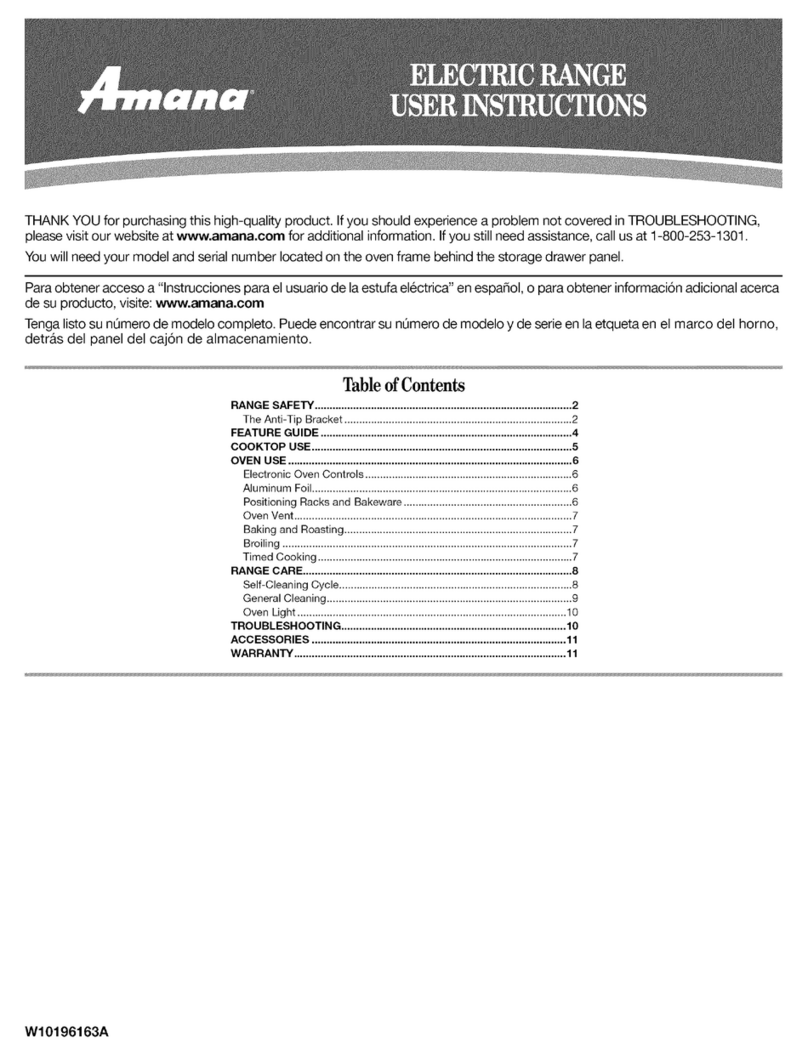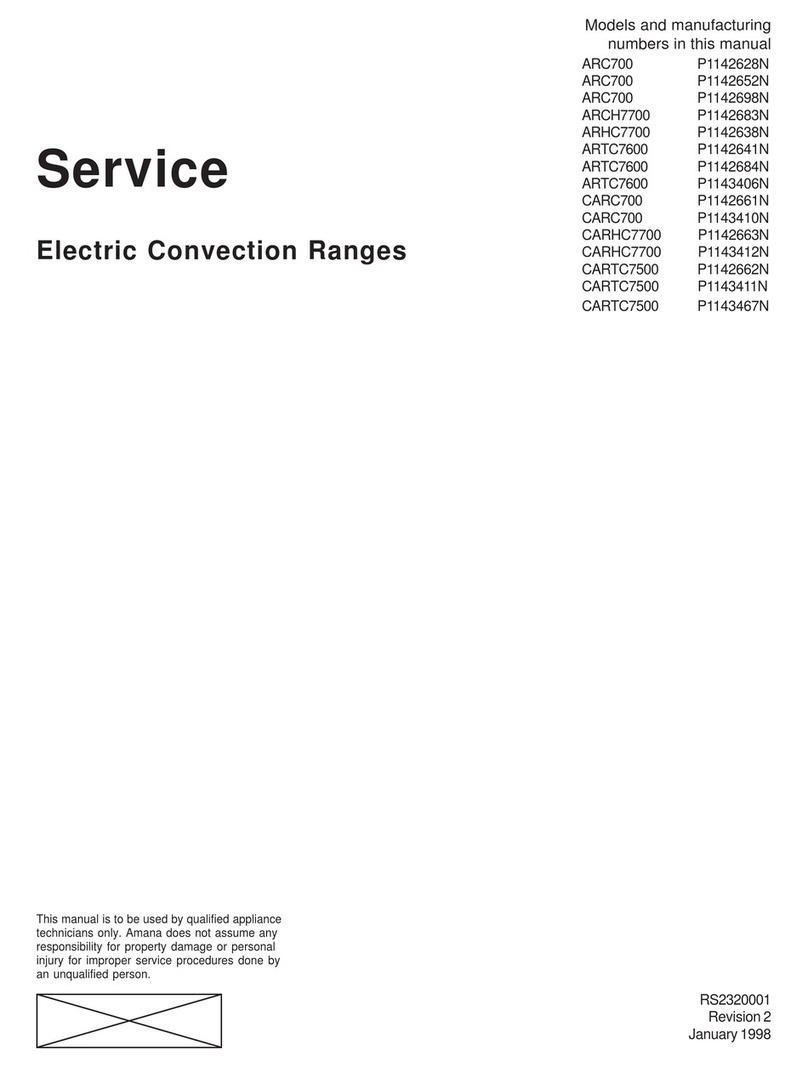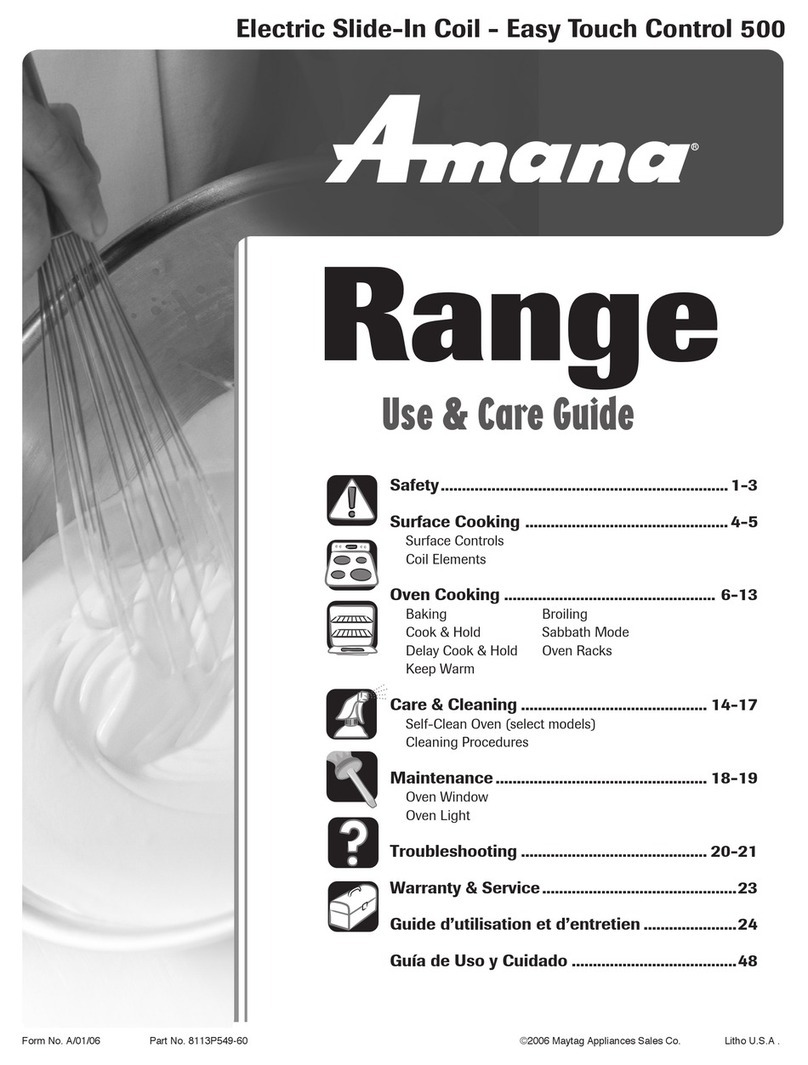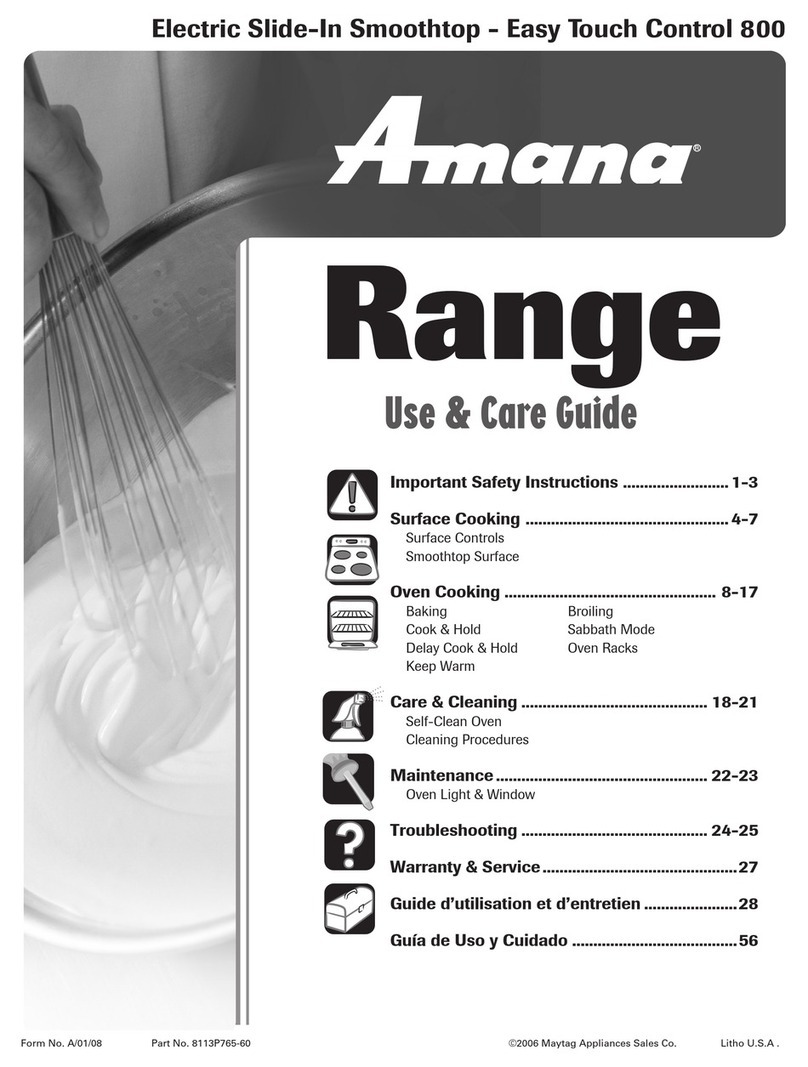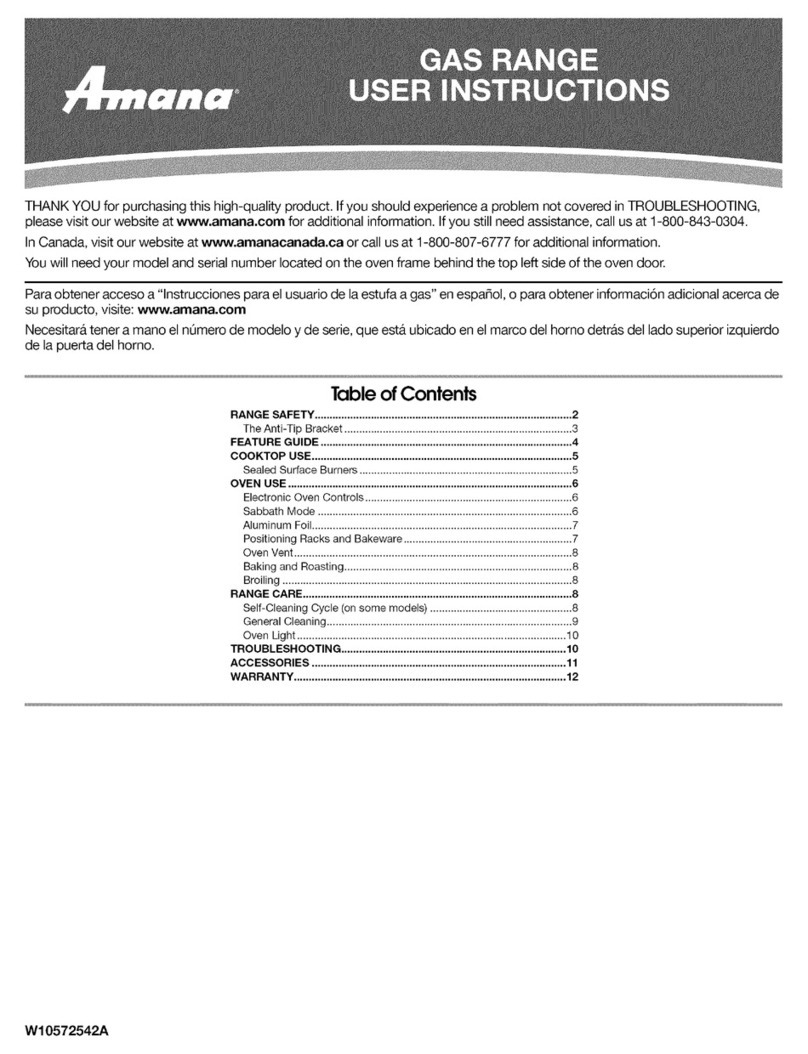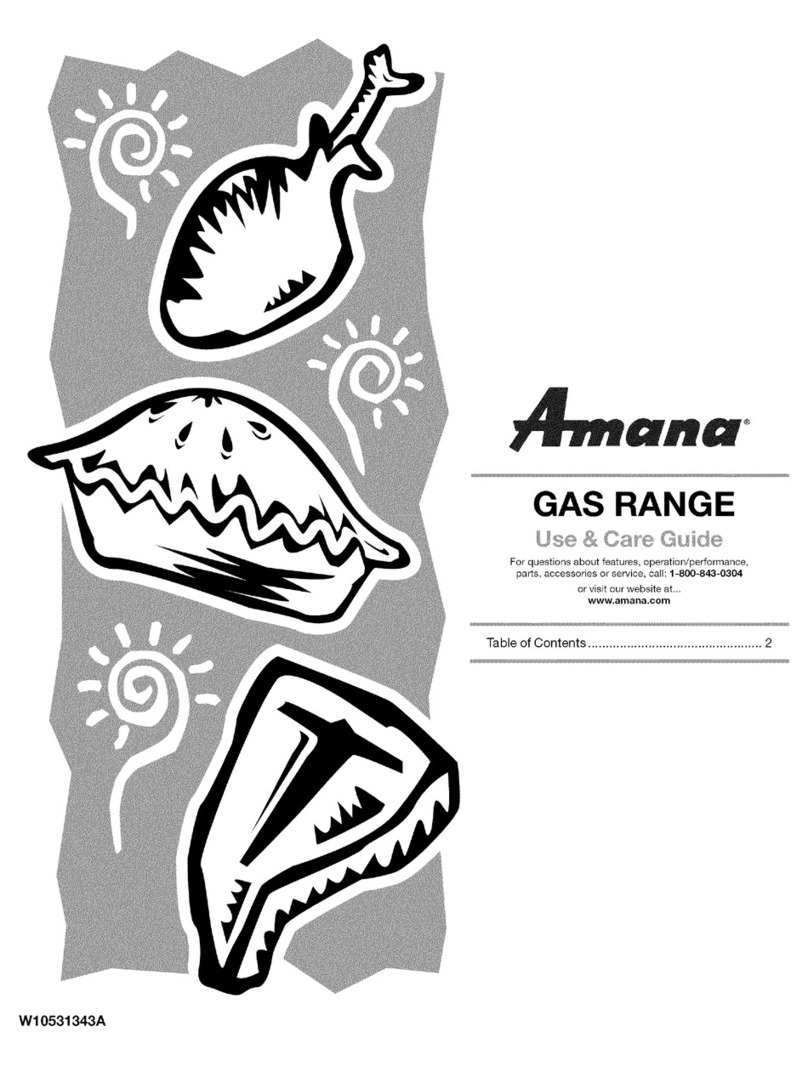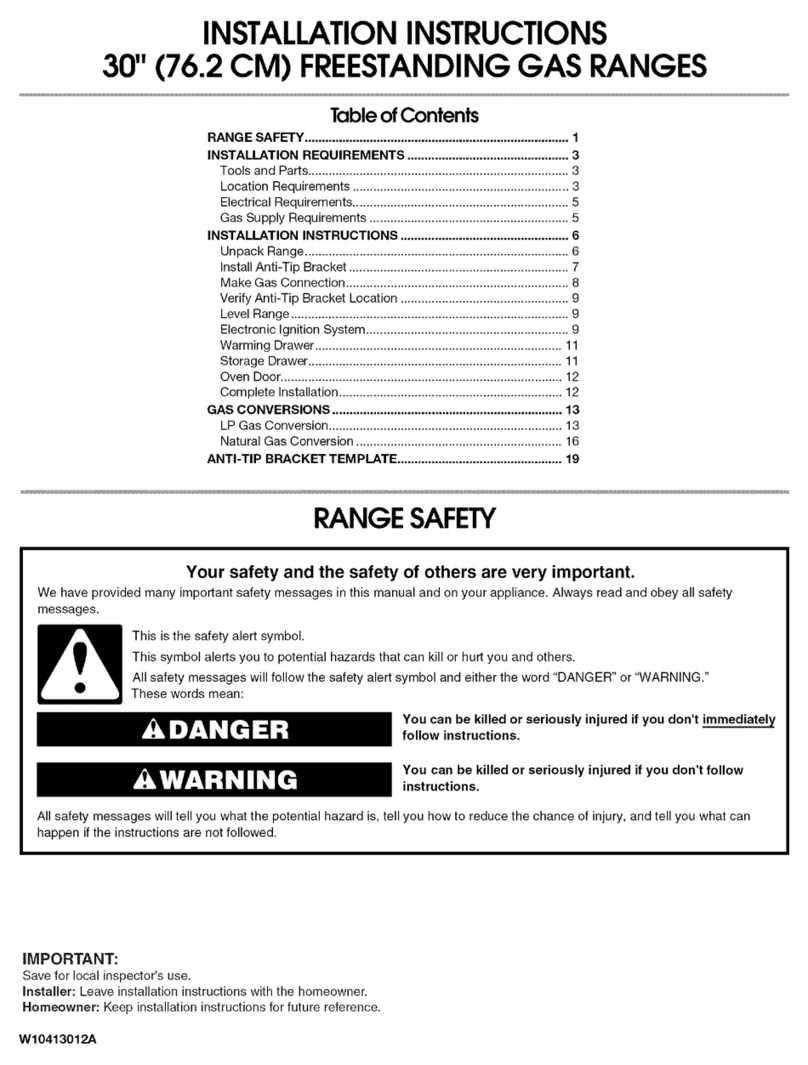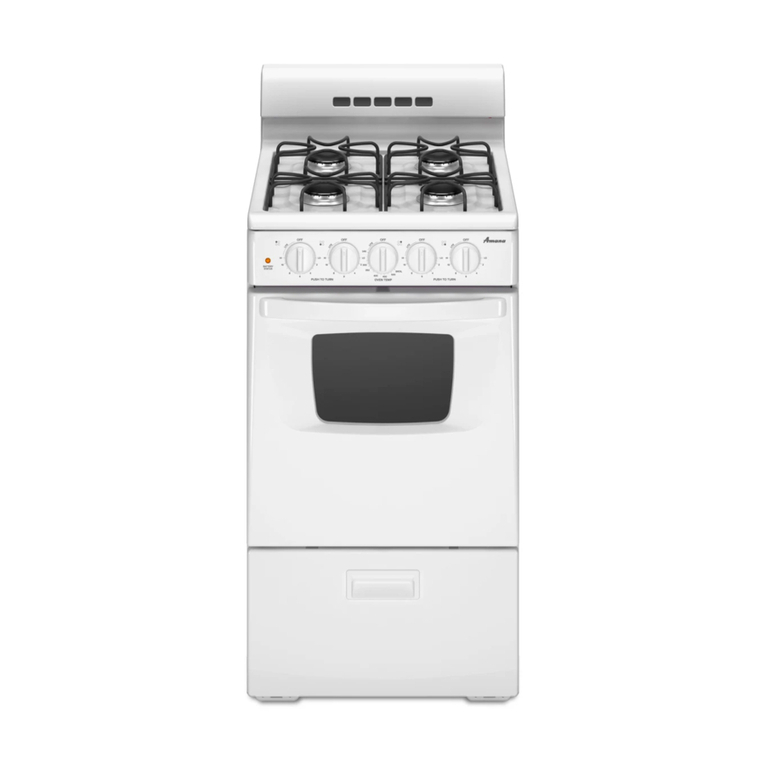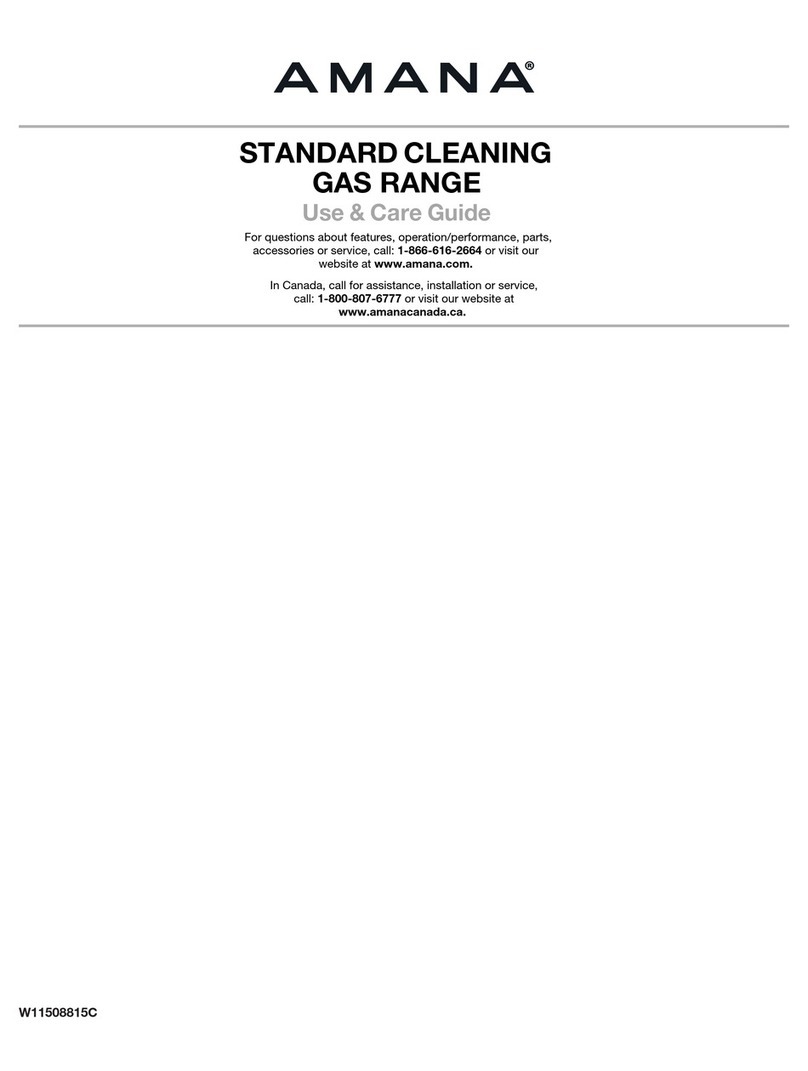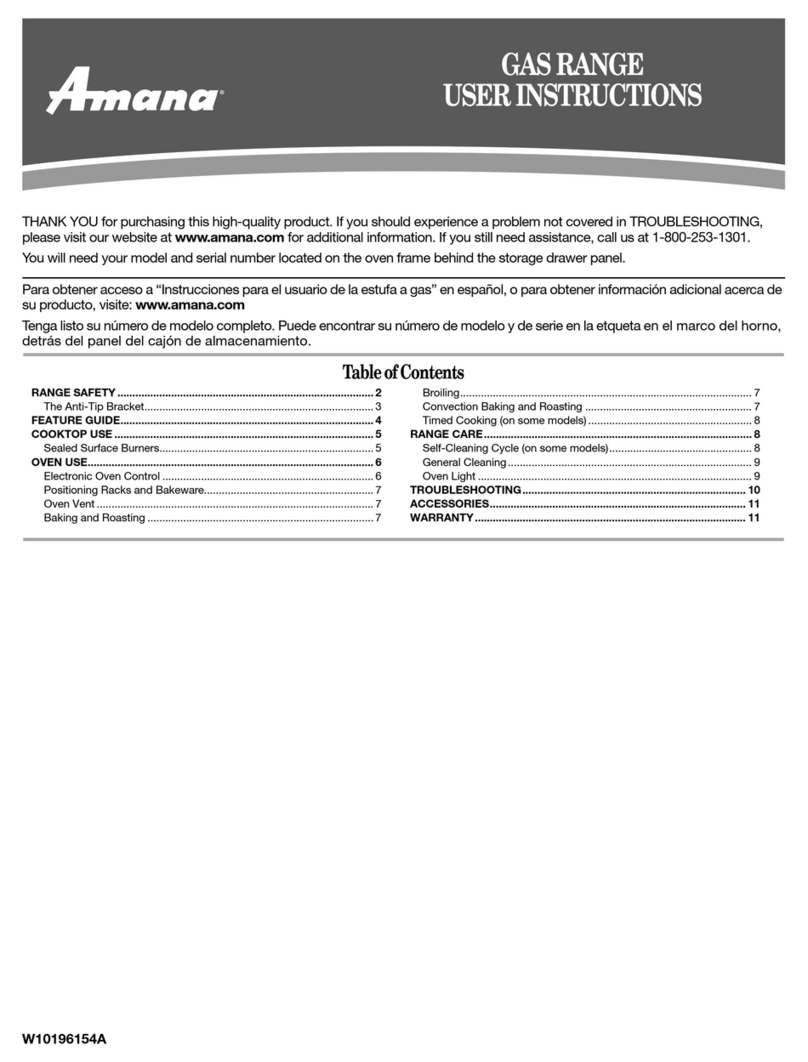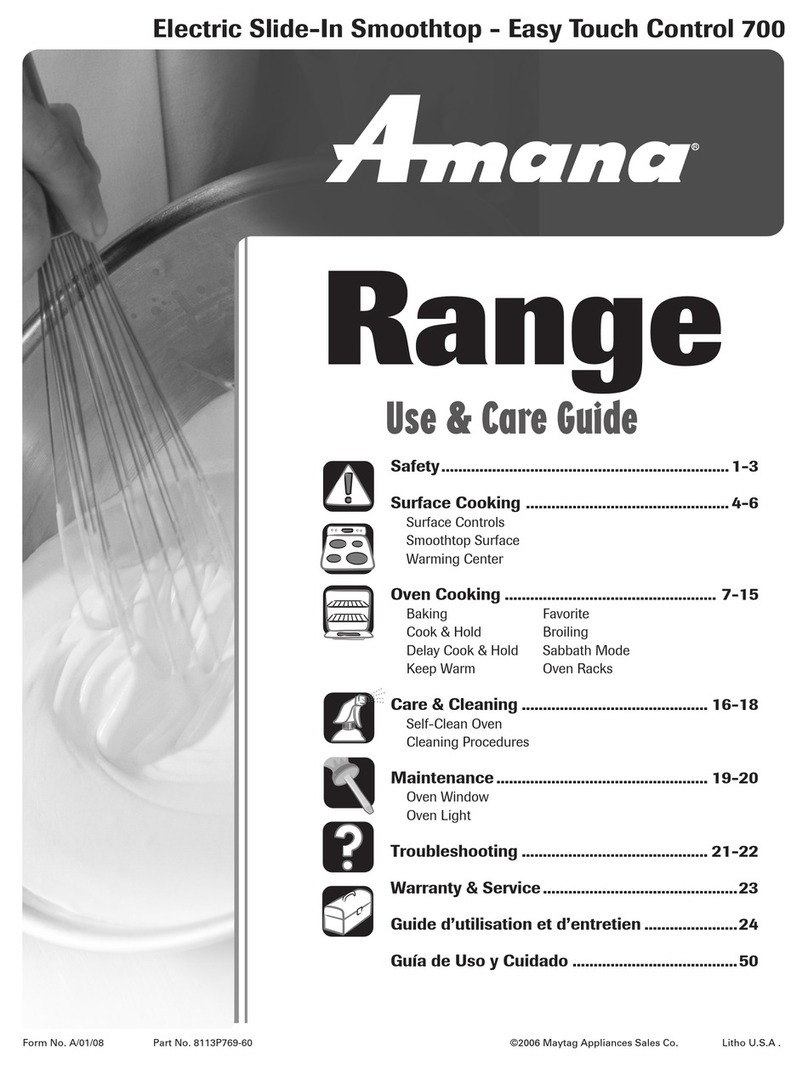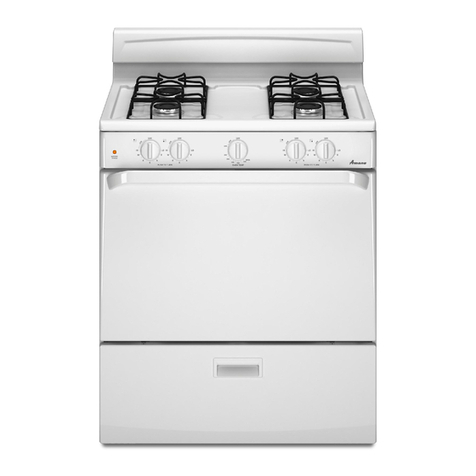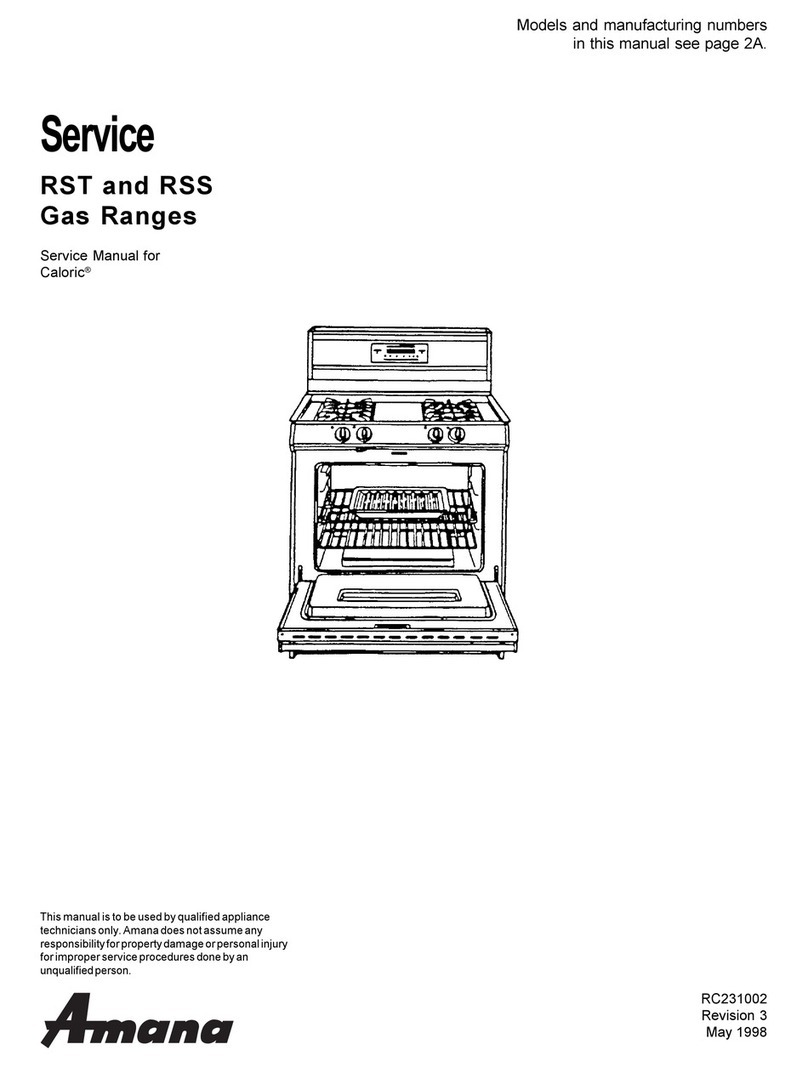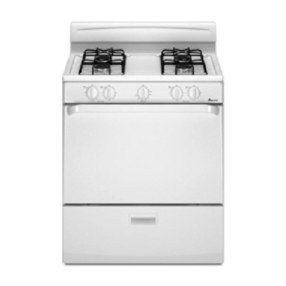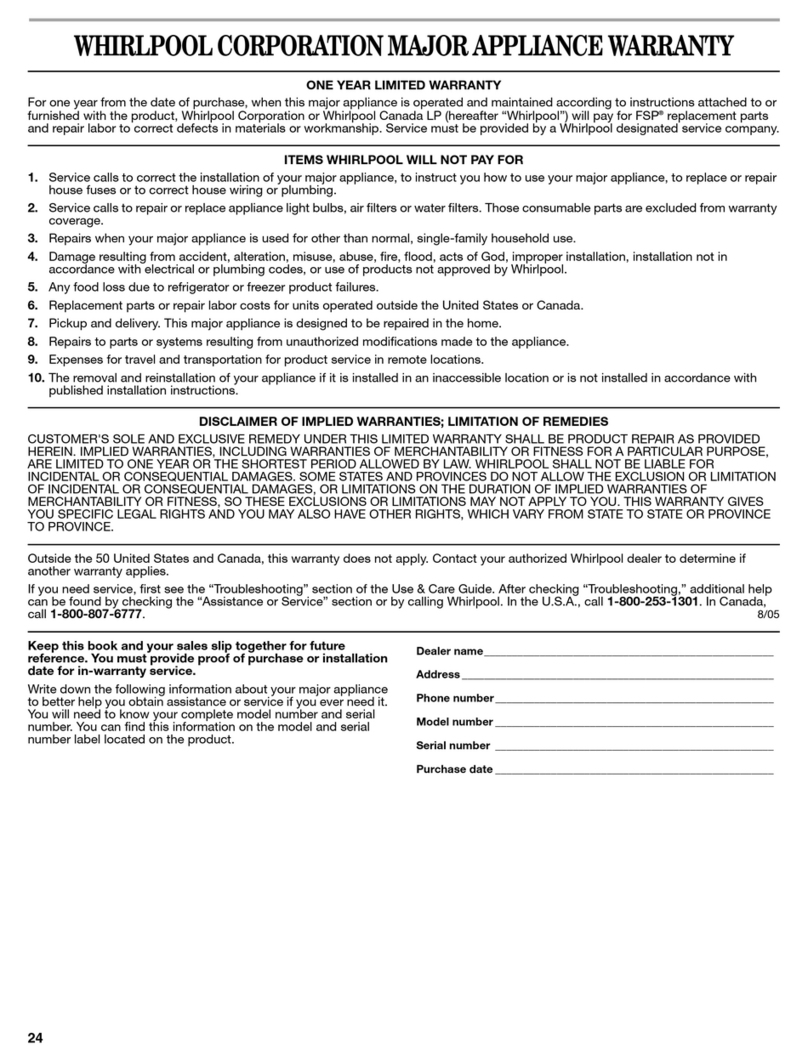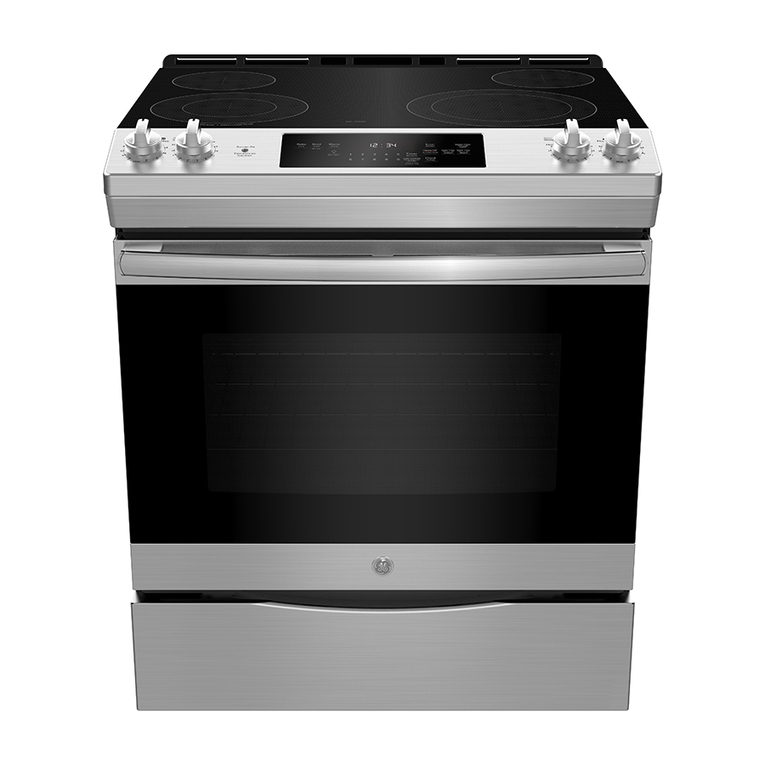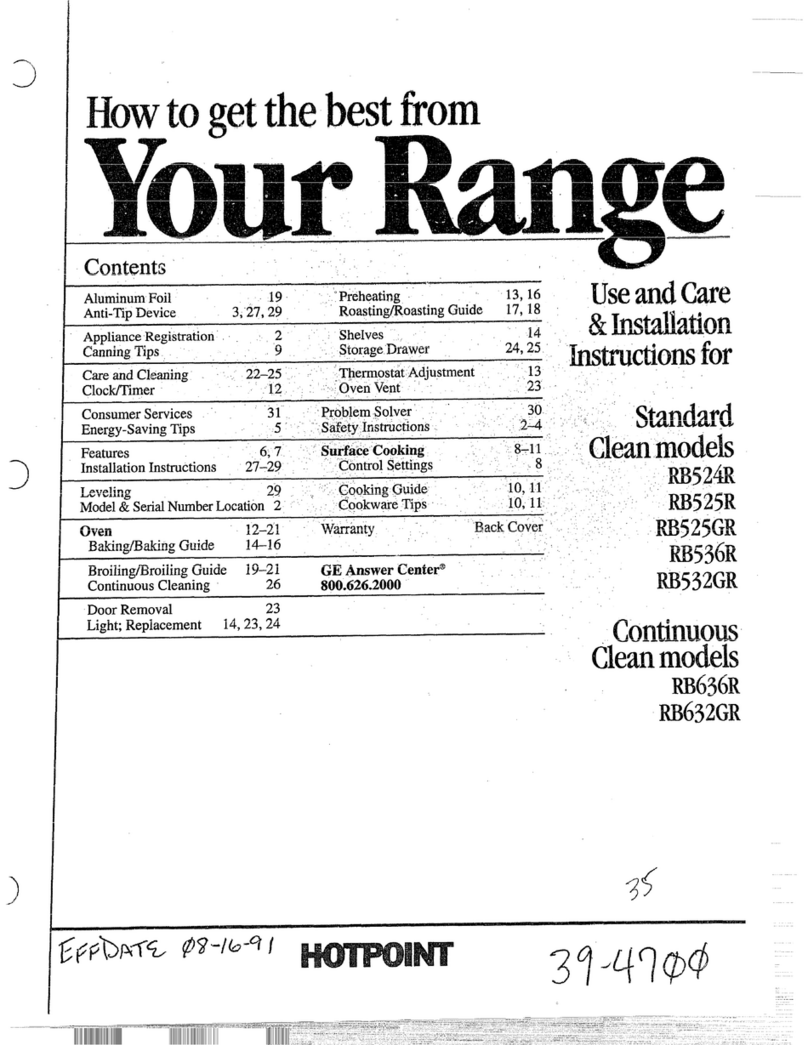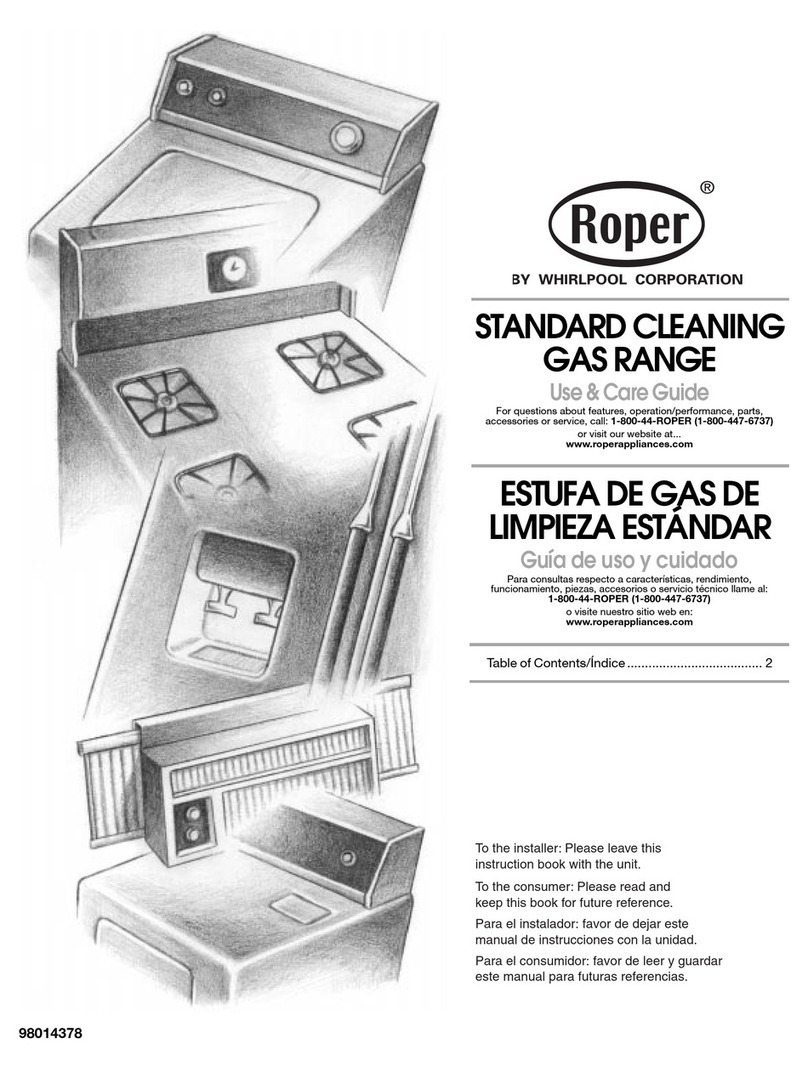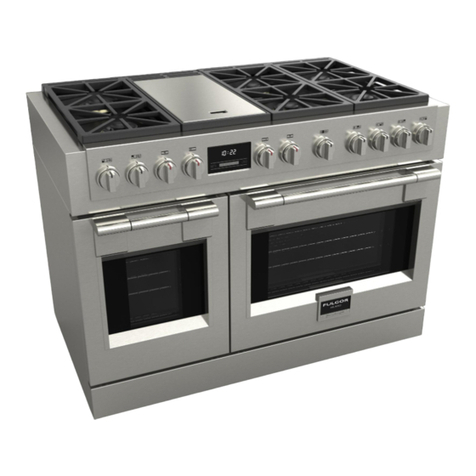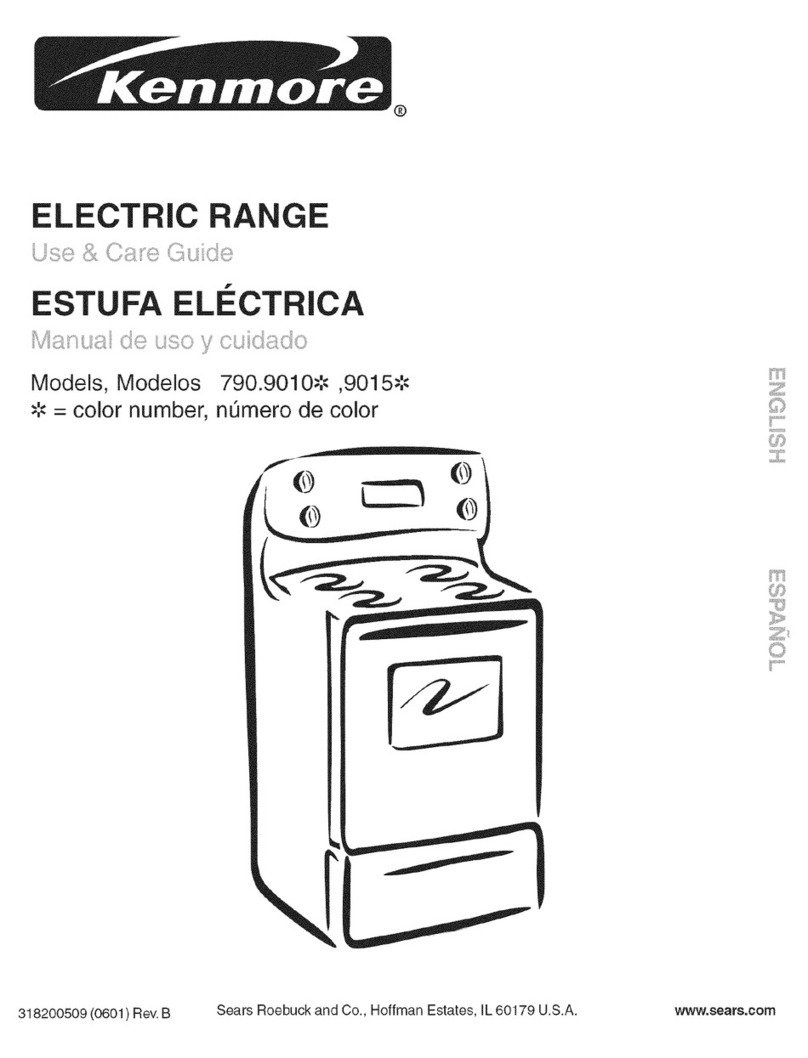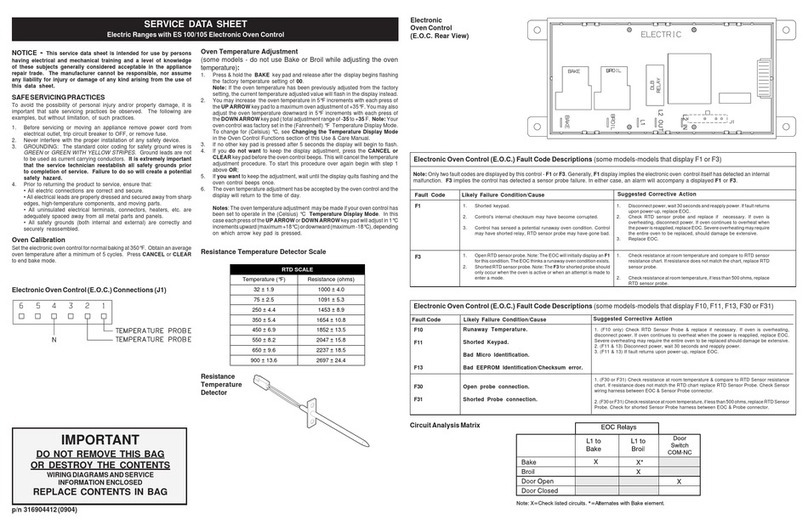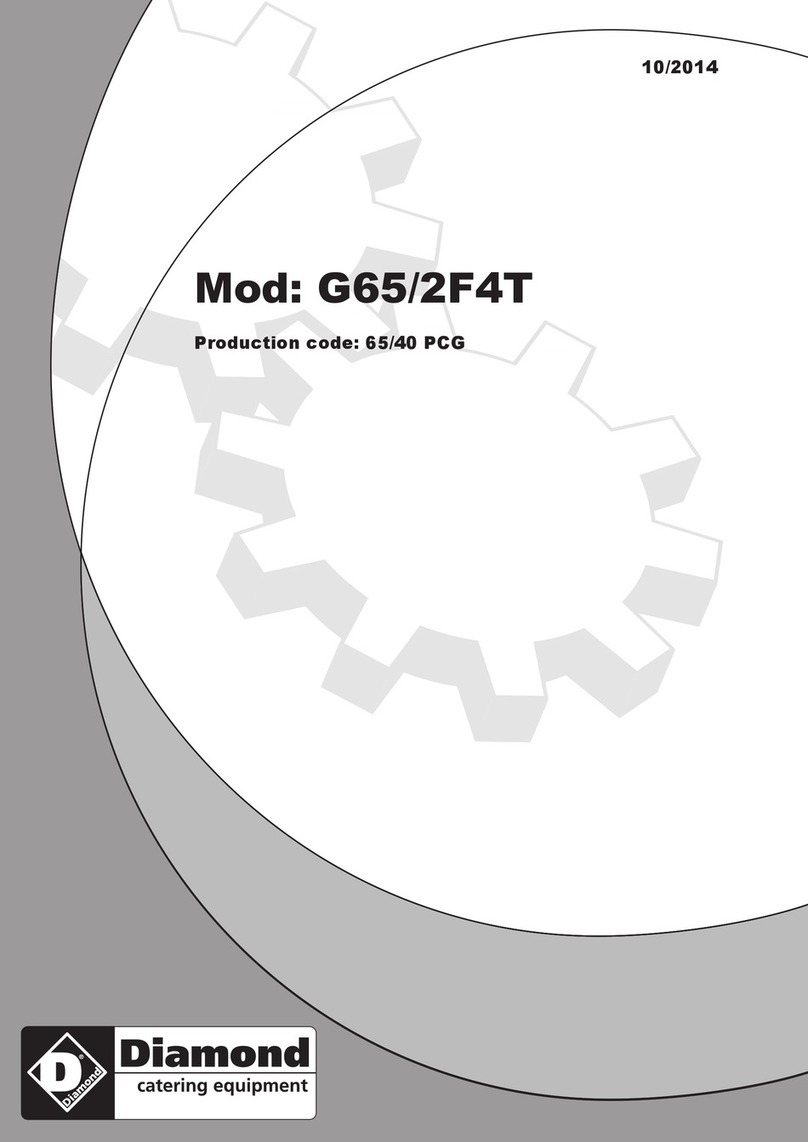
2
Contents
Cooking Guide
Utensils................................................................ 18
Oven Rack Placement .......................................... 18
Pan Placement .................................................... 18
Baking Guide ....................................................... 19
RoastingGuide .................................................... 20
Broiling Guide....................................................... 22
CareandCleaning
RemovingOvenDoor ............................................ 23
ReplacingOvenLight Bulb.................................... 23
RemovingStorageDrawer..................................... 23
Cleaning ............................................................... 24
BeforeCallingforService ......................................... 25
Common Questions ................................................. 25
Model Identification
Complete enclosed registration card and promptly return.
Ifregistrationcardis missing, call Consumer Affairs
Department at 1-800-843-0304 inside U.S.A.
319-622-5511 outside U.S.A. When contacting Amana,
provideproduct information.Findproductinformationon
ratinglabellocatedonovenframebehindfrontofstorage
drawer. Record the following:
ModelNumber: ______________________________
ManufacturingNumber: ________________________
Serial or S/N Number: _________________________
Dateofpurchase:_____________________________
Dealer’snameandaddress: ____________________
___________________________________________
___________________________________________
Keep a copy of sales receipt for future reference or in
case warranty service is required. Any questions or to
locateanauthorized servicer,call1-800-NAT-LSVC
(1-800-628-5782)insideU.S.A. 319-622-5511 outside
U.S.A.Warranty service must be performed by an
authorizedservicer.Amana,alsorecommends contacting
anauthorized servicer if service is required afterwarranty
expires.
Asure™ Extended Service Plan
Amanaofferslong-termservice protection for this new
range. Asure™ Extended Service Plan is specially
designed to supplement Amana’s strong warranty.
Asure™providesbudgetableprotectionforupto3
additional years. This plan covers parts, labor, and travel
charges.Call1-800-528-2682forinformation.Availablein
U.S.A. only.
Model Identification .................................................. 2
Asure™ Extended Service Plan ............................... 2
ImportantSafetyInformation..................................... 3
ALLAPPLIANCES ............................................... 4
SELF-CLEANINGOVEN ...................................... 4
SURFACECOOKINGUNITS ................................ 4
OVEN .................................................................. 4
VENTILATIONHOOD............................................ 4
In Case of Fire...................................................... 5
Precautions.......................................................... 5
Installation
Packing Material .................................................. 5
Range Location .................................................... 5
CabinetOpening................................................... 5
Minimum Clearances to Combustible Surfaces ..... 6
Special Counter Top Conditions ............................ 6
Anti-tip Bracket Installation................................... 6
ElectricalConnectionRequirements ..................... 7
ElectricalConnectionClearance ........................... 7
Gas Connection Requirements ............................. 8
Gas Supply Location ............................................ 8
Gas Supply Pressure ........................................... 8
Pressure Regulator Location................................. 8
ConvertingforUse with Natural Gas
or Propane Gas................................................... 9
GasConnection ................................................... 12
Testing for Gas Leaks........................................... 12
Seal Openings ..................................................... 12
Place Range ........................................................ 12
Removal andReplacement ofRange ..................... 12
Adjusting Surface Burner Flame ........................... 13
Adjusting Surface Burner Low Flame Size............. 13
AdjustingOvenBurner Flame ............................... 14
Broiler Flame........................................................ 14
Operation
Operating Surface Burners.................................... 15
OperatingSurfaceBurner during a PowerFailure .. 15
Baking ................................................................. 15
Oven Light............................................................ 15
Broiling................................................................. 16
Electronic Oven Control Pads and Lights .............. 16
Setting Electronic Clock ....................................... 16
Setting Electronic Timer ....................................... 16
Self-Cleaning........................................................ 17
